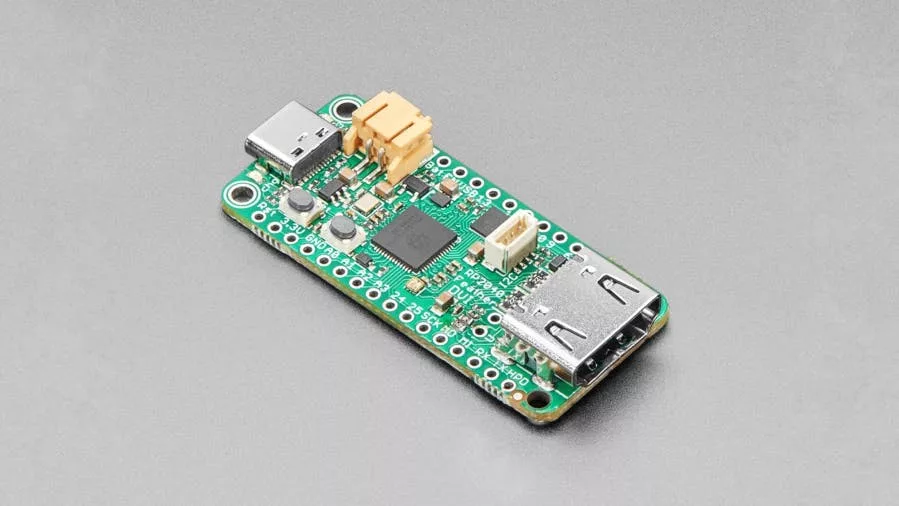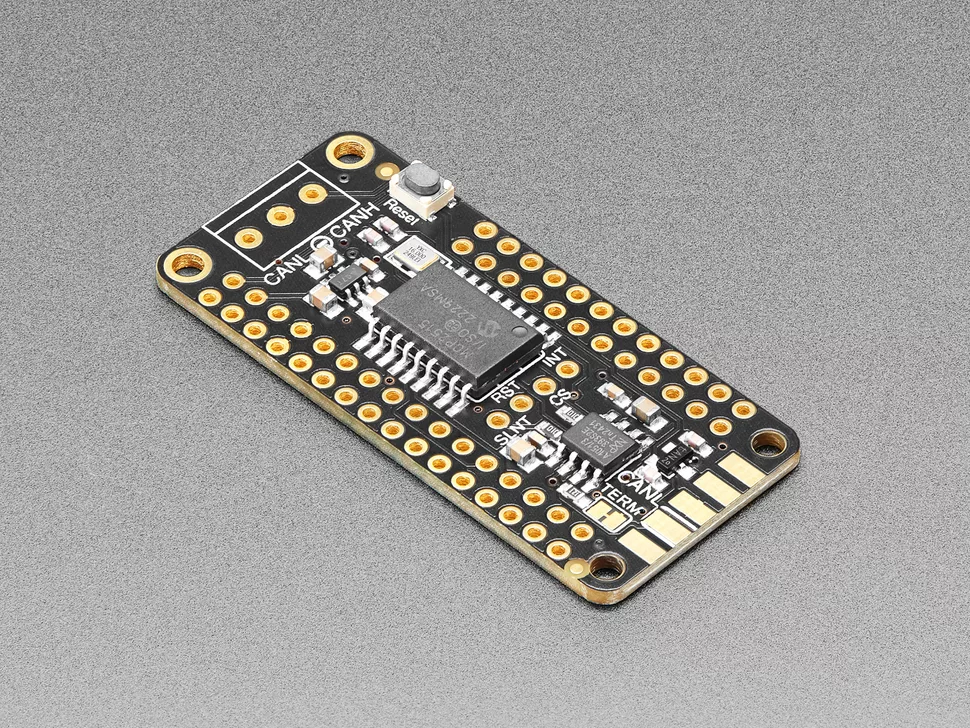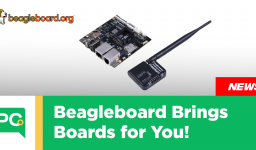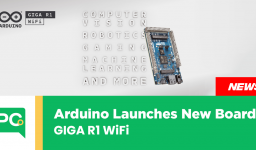Adafruit has launched a trio of new boards, out of the three, two aim at those working on automotive or other CAN bus projects and one which gives you an easy way to hook a Raspberry Pi RP2040 microcontroller up to an HDMI display.
“CAN Bus is a small-scale networking standard, originally designed for cars and, yes, busses, but is now used for many robotics or sensor networks that need better range and addressing than I2C, and don’t have the pins or computational ability to talk on Ethernet,” writes Adafruit about its latest CAN-based devices. Further adding, “CAN is a two-wire differential, which means it’s good for long distances and noisy environments.”
CAN Bus Feather Wing
The first of Adafruit’s new CAN bus devices is the CAN Bus Feather Wing. It is based on the Microchip MCP2515 CAN controller, chosen for its broad compatibility, along with stable libraries for both Arduino and Micro Python/Circuit Python projects.
The Feather board is compatible with any board, including third-party boards which correctly implement the Feather pinout. The Feather Wing attaches to the board and offers full CAN bus support, this includes the use of a 5V charge-pump voltage generator to properly power the NXP TJA1051/3 transceiver and options for 3.5mm terminal block or an edge-launch DE-9 connector.
CAN PAL
This tiny board packs the same NXP TJA1051/T3 transceiver and 5V charge-pump voltage generator as the CAN BUS Feather Wing. However, it lacks a CAN controller of its own. Instead, it’s designed to be used with microcontrollers offering an integrated controller but no on-board transceiver such as the Espressif ESP32 family, the Microchip AT SAME51 or STMicro STM32F405.
Feather RP2040 with DVI Output Port
Adafruit’s final new board, which at the time of writing was still listed as “coming soon,” is the Adafruit Feather RP2040 with DVI Output Port. Mashing together the company’s existing Feather RP2040 and DVI Breakout Board designs, the new Feather offers a single-board solution to getting a Raspberry Pi RP2040 controller talking to HDMI displays.
It uses the sneaky workaround of sending DVI signals over an HDMI cable to avoid having to pay a fee to licence the HDMI standard.
They added, “In Arduino, which is what we recommend, we use our fork of [Luke Wren’s] PicoDVI to create an internal frame buffer of 320×240 or 400×240 16-bit pixels that is then continuously blitted out as pixel-doubled 640×480 or 800×480 digital video. Note that the DVI video generation uses one full core, both PIOs [Programmable Input/Output blocks], and 150k[B] (320×240) or 190k (400×240) of SRAM. It’s kind of maxed out so be aware of the remaining resource limitations.”
Order Now!
The Adafruit CAN Bus Feather Wing is now available to order at $12.50; the CAN Pal is priced at $3.95, though at the time of writing was showing as out of stock; and the Feather RP2040 with DVI Output Port is listed as “coming soon” with a notification list available on the product page.










Leave a comment